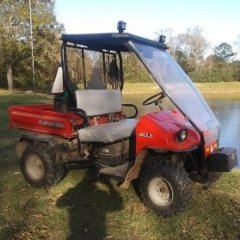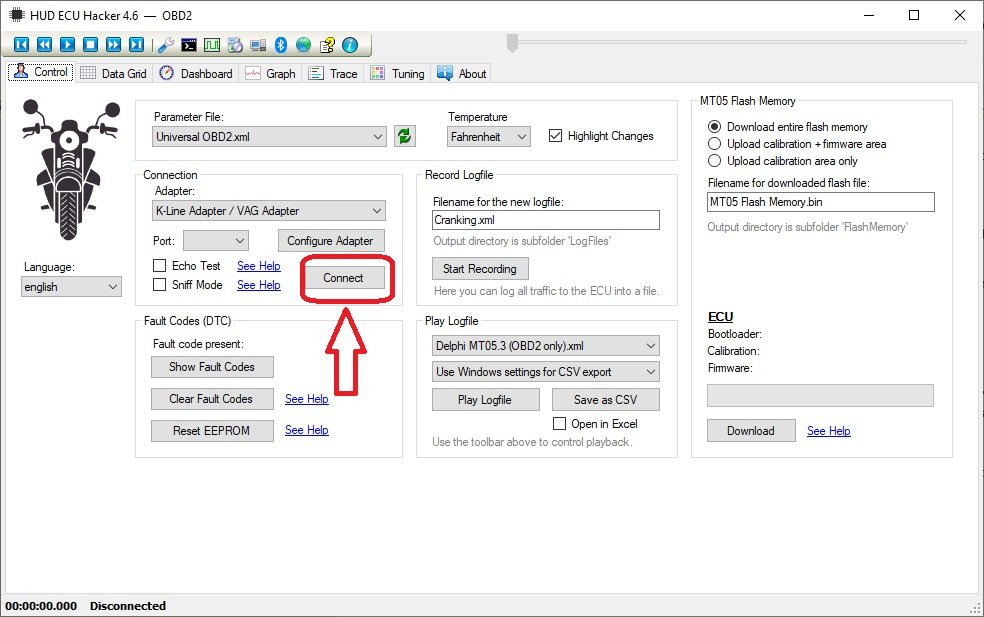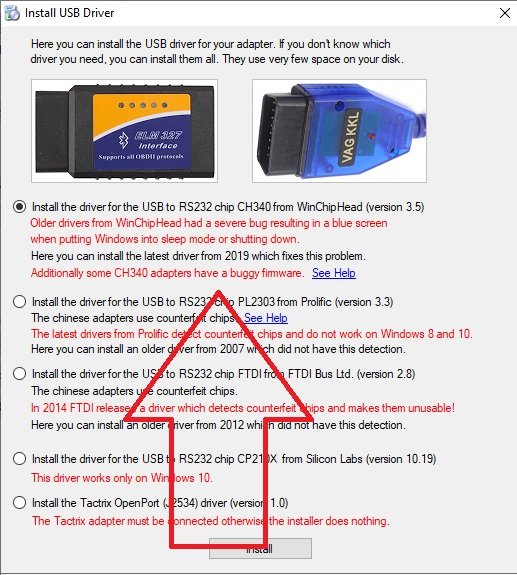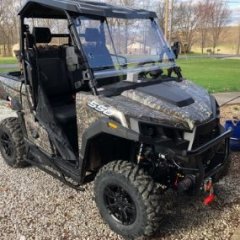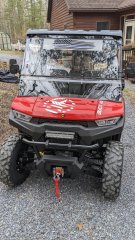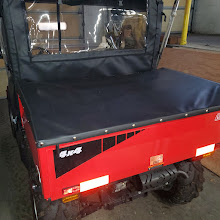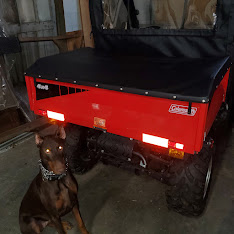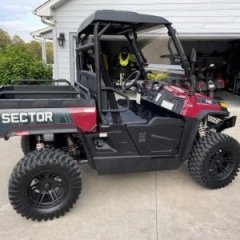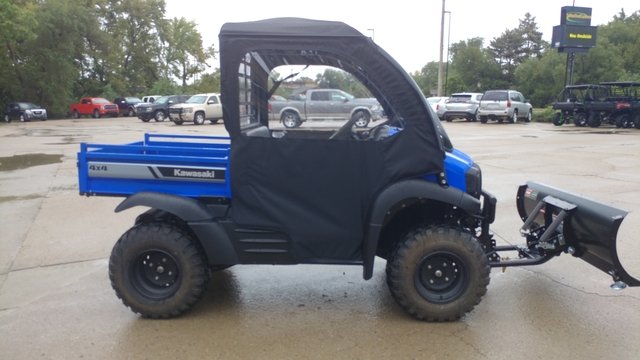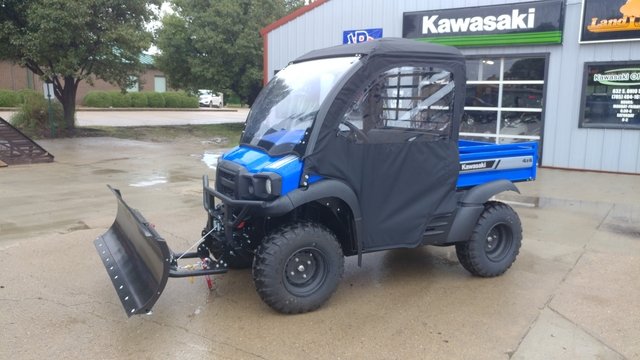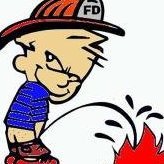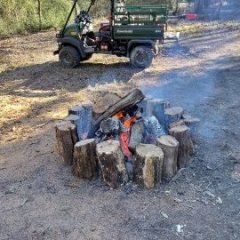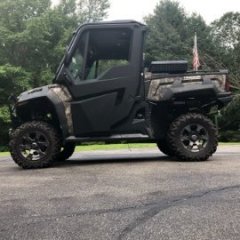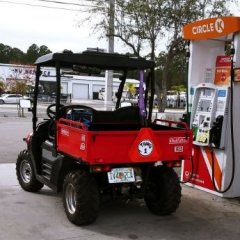Leaderboard
Popular Content
Showing content with the highest reputation since 07/06/2021 in Posts
-
Since I've seen some questions on this I took some pictures and will provide instructions on a valve adjustment for the UT400. This should be the same for the 550's and other various Coleman/Hisun single cylinder models with the cylinder slanted aft. I have seen several people ask of it is really necessary, and read several reports of valves being out of adjustment from the factory. My valves were .004" intake, and .010" exhaust with about 5 hrs on the machine. I've seen different numbers thrown around for factory spec, but I decided to go with 0.005". This is called valve lash. What is is is a gap between the rocker arm and the valve then the camshaft isnt opening the valve. Why does it matter? If it's too large the valve doesn't open all the way, if it's too small the valve dosent close. This can cause valve damage (overheating) as well as loss of engine power (burned fuel is going out exhaust rather than pushing the piston dow). Tools required : 5MM Allen wrench, 10MM box wrench, needle nose pliers, flat feeler gauge set, rags First you need to remove the fan cover on the passenger side. There is a cooling vent hose on the back side, remove the hose clamp and slide it off. From there there are 4x 10mm bolts holding the cover. The forward ones can be accessed from under the seat. Next remove the spark plug from the drivers side. Carefully wiggle the spark plug wire off. Grip it as low as possible and give it a little twisting motion as you pull it off to help free it. Its a tight fit for a socket, but there is a sheet metal wrench in the toolkit that fits it. Unscrew the plug and set it aside. This allows you to spin the motor over freely with no compression to fight. When you reassemble this is a good opportunity to switch to an NGK iridium plug for better performance/less fouling DR8EIX) Next you need to remove the intake and exhaust valve covers. The intake us the forward one. There are 3x 5MM Allen screws to remove. The Exhaust is the rear with 2x 5MM Allen bolts. Both covers have O-Rings instead of gaskets and are reusable. When you remove the rear be careful and use your rags as there will be oil that drips out. Next up we need to spin the motor over to top dead center. Grab each rocker arm and give em a little wiggle up and down. Spin the engine over by grabbing the fan with your other hand. Spin the engine over until both rockers have some wiggle and are loose. Once both rockers are loose slide the feeler gauge in like shown above. Try different feelers as needed to determine your starting spec. You should feel some drag but still be able to move the feeler without too much force. If you need to adjust, use the 10MM wrench to slightly loosen the locknut, then with the correct feeler gauge in place, tighten the top square nut while wiggling the feeler in and out. Once you have it right you need to tighten the 10mm lock nut without moving the square head bolt. Once the lock nut is tight recheck the clearance. That's it, button everything back up and make sure you have it all reassembled before running it again. If you find this helpful give me a thumbs up or comment. If you have any questions or need more help let me know. If there's interest maybe I'll do some more of these6 points
-
In order to connect with the ECU we need two cables. The first is a USB ODBII cable. HUD ECU Hacker’s documentation has a lot of different confusing options, but here’s what I went with and managed to get working, the cable is called “VAG KKL” it is a USB to ODB2 cable. It is available from a variety of sources for $10-15. The second thing we need is a “6 pin delphi to ODB2” adapter cable. It is also available for a similar price. In my case I ordered both from ebay, but there are other sources. Once we have our cable in hand we need to find the plug it in on your machine. My personal rig is a Coleman UT400, but the wire location should be similar for all Hisuns. My cable was located under the middle of the seat area. Just inboard of the battery, where the main wire harness split loom runs. The cable is a 6 pin (3x2) with a dust cap. Remove the dust cap and plug in the 6-pin end of the Delphi adapter cable. Note: When I was done, I left the 6-pin adapter connected, and zip tied it so it now runs to in front of the battery for easier access in the future. Next download and install HUD ECU HACKER DOWNLOAD Open HUD ECU Hacker on your PC It should prompt you to choose a driver to install. This particular cable uses the “CH340” driver (First choice on the menu) click to install, once installed hit the X in the corner to go back to the main page Once the driver is installed plug in the USB Cable, and plug the ODB2 end into the 6 pin adapter. The red led on the adapter should light up indicating it has power. Drop down and pick a com port on the main screen, it should show the VAG KKL adapter as a com port. Click connect on the main menu. It will pop up a bunch of fast scrolling text indicating it is connecting. Once connected you can click through the various tabs to see different data sets. The main menu also has the option to show fault codes, clear fault codes, reset the EPROM back to factory. The other function that may be helpful is recording a log file. You can record a log while operating the unit, and come back later and replay it to try to better diagnose what is happening. Within the various pages you will see the reading from each sensor. Sometimes a sensor reading will be off enough to cause running issues, but not enough for the ECU to realize its an issue. For example if the engine thinks it’s really warm, but its actually cold, it may not inject enough fuel to start. There are also more advanced functions, like adjusting fuel mapping, but that is beyond the scope of this tutorial. Full HUD ECU Hacker Documentation (Very technical reading) If you find this helpful give me a comment below or a thumbs up.5 points
-
White smoke is usually coolant leaking into the cylinder. Sounds like a blown head gasket to me.4 points
-
Just wanted to give update . It was the ecm. Put new one on and got spark immediately to front cylinder. Ran but smoking and no power. I checked back cylinder and no fire. Pulled coil to check with meter and found wire was not getting good connection where it plugs into coil. All good now . She will scream !!!. Next is to figure out why 4x4 switch wont turn. Thanks for all the imput....4 points
-
Hello to anyone who reads this. I am Jon and I own J&M Outdoor Power, a very small, small engine repair shop. I was approached by Coleman about 6 months ago to become one of their Warranty Centers. I recently received 3 different UT400's and a UT500 all with similar issues. These units range from 2 months to 2 years old. Customers state that the unit(s) was/were running fine, then heard a pop and a loss of power, two would no longer start. The two that would run would not achieve normal operating speed (around 20mph I would say) without redlining the RPMs. I quickly found that the Valve lash on each unit had become too large on some(both intake and exhaust) and too tight on one(just intake). After setting the gaps to .005(I found multiple different people suggesting bigger and smaller gaps, but no definitive Coleman Spec number yet) every unit starts, runs, and achieves top speed without issue. I don't know how many others have come across these issues, and I wanted to get something out on the web for others in the same predicament. Please let me know if you have had similar issues. Edit: I realize that this will not be a fix all solution for this issue, as the oil level and condition should be verified before moving to the valves. Many times improper oil conditions will cause valve lash to change. These units all have good oil and proper oil changes.3 points
-
Hello again! I now have a pretty good running Coleman UT400 after a top end rebuild, wet clutch rebuild and a repaired crankcase... ! It plows snow great, but I was also having the jumping out of gear problem, mainly reverse, but a couple times out of forward. I would quickly place it in N and then let the engine idle down and shift again. This worked most of the time. I did some research and found that some have modified the shift linkage. The problem with just adjusting the shift cable is that it really NEEDS more throw, not an adjustment. From what I've read and viewed on the Internet, the linkage arm needs to be about 3/4" longer to gain more throw in both directions. On YouTube, the guy had to remove the shift linkage hole trim and notch the side of the dash to get the shift linkage off the pivot pin. BUT this is NOT necessary. When the "E" clip has been removed and you fish it out of the firewall somewhere, the shift lever is now loose. I had to pop the top of the shift knob off, remove the retaining screw and then heat the lower portion of the knob to get it to come off the lever. Once you have the shift lever loose, push it towards the right to slide it off the pivot shaft. But it won't come off just yet. Use a small pry bar/screw driver and slide the nylon flanged bushing out of the left side of the lever. This lets the lever slide off and get into a "loose" condition and it will twist and come right off without removing the dash trim, that could be a bugger to get back on correctly. Once the lever is off, press out the other bushing so when you're welding on the linkage arm, you don't melt the bushing. I found a piece of scrap metal the same thickness as the lever arm, just over 1/8" thick, close to 3/16". I cut my arm and beveled the edges for better welding. I added a piece just over 5/8" long and kept about a 1/16" gap between the arm and the new piece. Once welded on bother ends, it adds up to just about 3/4" or so. I reinstalled the lever after painting it and did an adjustment on the cable. By the way, it's easier to remove the cable from the bracket on the frame. This gives you more clearance to maneuver in that area with your hands. ALSO, you will need to get a 12" adjustable wrench and slide it over the cable mounting bracket and tweak, to the front, the steel so the cable is pointed upward a bit to now realign with the new longer shift arm lever. There's more than enough metal for the tweak and it will line up perfectly. I now bottom out the shifter on the transmission BEFORE I run out of throw on the shifter... I've tested it just a bit so far and it shifts much better with the longer throw. One of the Coleman authorized repair facilities said that he worked with Coleman to get a new part that's longer by 3/4". He's modified a few and it works perfectly for him. Just doing the cable will just short you on the other end. Here's some pictures of my modified shift lever etc.3 points
-
I have come to the conclusion @Joe Toup must be one of the very best, most helpful members here!!! He has been tireless sharing his knowledge and expertise helping me solve a problem. I am sure I'm near a good solution thanks to Joe!!👍👍👍3 points
-
There are actually 5 disc brakes on these machines. 1 for each wheel and 1 on the rear driveshaft for the parking brake. I've read several complaints of the parking brake one being too tight from the factory so I would check the cable and make sure there's a little slack when the parking brake is released. If that is good I would jack up each corner Individually and spin the wheel to listen for noise and feel for dragging. That should help pinpoint where the issue is.3 points
-
anybody else getting spam /fraud private messages on here besides me? How do I report it? He calls himself Maria .under ORANGE 15 name.. wants to hook up in UTVs .. con artist in Pakistan probably.. Cant ADMIN block this crap ? geesh3 points
-
Just looked at the Lowes add for that, pretty much looks like an MSU 500/700 that Hisun made for Massimo back then. Take a good look at the badging on parts to see who it's actually made by, my guess is it's still Hisun.3 points
-
I've seen a number of requests for the location of all the grease points on these machines, and there is no definitive list in the manual. This covers the UT400, but other Coleman/Hisun models should be similar. Tools: First to grease your machine you need a grease gun and some NLGI#2 grease. You will find it helpful to buy a needle attachment as pictured here, due to poor clearance on some of the U-joints. The rest of the zerks use the standard attachment. Technique: Wipe any dirt/grease off the zerk before greasing to prevent pushing gunk inside and causing excess wear. Push the grease gun on the zerk at a straight angle and give it a few pumps. You will hear an oozing noise or sea grease coming out from the outside of the greased area when you've put enough grease in, a few pumps should be plenty. If it's just oozing around the zerk you either don't have a good seat with the gun, or the zerk may be rusted and the check ball frozen. Try seating it again and regrease. Wipe up any excess grease when youre done to prevent making a mess. Greasepoints: Rear A-Arms are greasable with the wheels on from the rear, I took the picture with the wheel off for easier visibility That's it. All other Hisuns should be substantially similar.2 points
-
Are you talking about an electric heater? if yes its likely too much current. There might be 10 amps of available current coming out of the rectifier that isn't already claimed by the ECU and factory lights. 10 amps @ 12V = 120 Watts, which is about what an electric heating pad runs. If you're talking about a fan for a engine coolant based heater it's probably ok. If you have accessories and the running voltage is below 13.5V you have too much stuff attached. If the battery light comes on it means the battery is actively being discharged while running. Stator based charging systems on these things and tractors etc are really meant to power the ECU and factory systems not to provide a lot of extra power for other stuff, it's not like the alternator on a car.2 points
-
From the look of the picture on the post, I can think of a couple things2 points
-
Its' not a car, this is a motorcycle engine with a small stator charging system. You can't expect to run high wattage accessories like a heater or huge light bars on these things . That will overwhelm the charging system, drain your battery an stop your engine. Could damage the charging system and voltage regulator too. You only have about 10 amps extra to run any accessories including lights.2 points
-
my Hisun in my Massimo , sold by Tractor Supply, assembled in Dallas, say Made In China on every part of all of it .. Altho it now has multiple Yamaha parts mixed in. lol2 points
-
https://motorcycledoctor.com/wp-content/uploads/2021/08/Valve-Adjustment-HiSun-2.pdf This should do it.2 points
-
Yeah, I adjusted mine multiple times without any luck. I had extended the shifter rod, as mentioned on this board, as well as some videos I watched, and that resolved the shifting issue. Now, after it slips into forward or Reverse, it never slips out. PS: If you go this route, remember to readjust the cable to compensate for the extended shifter. I had to do the adjustment an couple times after extending the shifter and then the problem was resolved.2 points
-
Problem was using cheap eBay injector. Bought quality one and hot pipes went away. Running like new.2 points
-
2 points
-
Massimo MSU500 won't shift to low I would check the shift linkage. Adjust it make it a little longer, if it is not long enough it won't shift to low2 points
-
The P.S. has me thinking......you mention "Fuel mist" out of the valve rocker cover. All you should is basically NOTHING at crank speed. Any vapors blown out are from blow by (past the rings) into the crankcase. IF you are OVER FUELING and wetting down the cylinder walls (that is, washing off the oil coating) you will have blow by. Oil coating helps seal the rings. That is why an engine that has set (dried out) and low compression is given a shot of WD-40 or any light oil to seal the rings. This leads to the next thought.....If over fueling, the raw gas will "drain" into the crankcase and dilute the motor oil. Check motor oil level.....too high?....too thin?.....wipe on tissue and sniff the oil....Gassy smell?....will light off with a burn test (soak up some oil on a paper towel and see how fast it starts to burn). Oil basically won't. Diesel will start slowly but take off. Gassy oil....if you value the hair on body parts...hold at a distance with long needle pliers!!!! Gassy diluted motor oil will add to the fuel/air mixture via the breather tube. Similar to a turbo seal failure on a diesel......RUNAWAY even after the injector pump shut down...very bad ending! Drain oil and replace filter....won't get it all (always some oil remains that cannot drain) but will dilute the gas. BONUS: Pulling the vent tube will clean up a mystery RICH run be it carb or FI (everything is correct BUT) after the motor warms up and cooks off the gasoline----sorta like an EGR Evap system. Slop fuel never lights off or barely runs depending on the degree of "slop". You state pulling the injector, the engine runs until it runs out of fuel. ARE you leaving the injector hole OPEN. This will allow lots of fresh air into the cylinder and will light off a rich mixture and then die because no more fuel is injected. ASSUME the ECM is sending the correct pulse width to the injector for now. Injector can hang and "piss" instead of spray. The key is the 14.7/1 air fuel mixture. Too RICH.....runs heavy and then dies at idle. May start to run, but as the leftover UNburned charge gets richer-----labors-----pukes. Too Lean......no start....fuel is there but cannot lite off.....then as it builds up, you get a pop only to be to lean again.....repeats the cycle.....THIS IS HELL ON THE STARTER AND REDUCTION GEARS. This also load the oil with gasoline (unburned). Again the fuel correct, look for a restriction in the air intake (not enough air).....common causes....CRITTERS...mouse house....full of acorns....rag pulled in for a nest, and so on. EASY TEST: Remove the air intake plumbing at the throttle body. Plenty of air now. If runs, check out the air box/plumbing. IF NO RUN....next section. Too much fuel: Time to test the ECM/injector system. ANY BAD input signal to the ECM will make the fuel delivery too much or too little. Pull spark plug. Read the insulator tip color. Just right is a light TAN color. Very WHITE...blistered LEAN. RICH has a BLACK, SOOTY, shiny black/wet black (carbon is fuel soaked). If really black, they might fire outside to the engine block BUT "blowout" under compression even at idle. If not too bad, they might run at idle but when sputter and die when a heavy demand on the ignition system (acceleration) is applied....drop in a new plug for testing to just to reduce the possible list of problems. Pull the connector to the fuel pump (under the pass seat). This is the fuel pump power (from ECM) and fuel level signal. No guessing if you found the right fuse/relay. This will stop the fuel delivery (40 PSI) to injector. Injector will still get pulses. You will shoot a short burst of starter fluid into the air box (plumbing reattached and filter OK). The motor should lite off and run until it is out of fuel. Repeat. Repeat. If works every time, give a double burst when running to "sustain" the run. Repeat. If this works, you have the ECM/input signals to ponder. This gets deep for most. Coolant temp sensor....open circuit RICH. Thinks it is at the SOUTH POLE -40 C. Like a choke for carb. Throttle position sensor.....wrong fuel mix to match the air thru the butterfly valve. MAP sensor/ambient air temp....measures engine load....wrong signal rich and lean. O2 sensor....signal to tell if RICH or LEAN. Has heater circuit to get it up to operating temp. Heaters open (toaster that does not toast). Throw in smashed wires, critters that live the taste of plastic insulation on wires, stick run thru harness, heater shorted to SHARP edged heat shield above the exhaust. More common failures are the MAP/IAT (intake air parameters) and O2 sensor. You got a lot of checks to get down to where the problem is. BTW, the ECM is a DELPHI MT05 small engine unit capable of a twin (2 inputs for the two cylinders individual O2 sensors). Check out web page for specs, pin outs for both the Grey and Black connector (PDF format)....magnitudes better than the "manual" supplied when first built. Only covers the electrical engine management with a generic diagram of the analog input(s) and the outputs like fuel pump, ign coil, etc CHOW.2 points
-
2 points
-
2 points
-
Paint chip is no good, but doubtful that it made it thru the filter, so it's likely been there, or got knocked off when you were working on removing things. Code 201 indicates that it is getting a weak or unexpected signal from the injector. The fuel metering is done by pulsing the injector open. The ECU expects it to be X resistance and it gets Y resistance instead and throws a code. This could be a failing injector (the internal solenoid may be failing) a loose or intermittent connection, chafed wire partially shorting to ground, moisture or corrosion in a connector, etc. It's likely intermittent, but will eventually get worse. When it's happening it will throw the code and give the engine the wrong amount of fuel causing stalling, performance issues, no start, etc. If it were me I would visually inspect the Injector wiring for chafing, check inside the connectors, and if I didnt find anything just throw a new injector at it. You can also check resistance of the injector, but if it's intermittent it may check out ok when you happen to check it.2 points
-
I've been looking for a cross to a filter from a known manufacturer since I bought this machine. Both from a cost standpoint, and a known quality standpoint. The factory filters are just plain black with no markings. Due to price point on these machines I would assume that the factory filter would be made as.cheap as possible I have not had any real luck finding a cross, so In doing my first oil change I decided to cut the factory filter and see what is inside. I don't have a fancy oil filter cutting set up, so I just clamped it in the vise and went to town with my portaband. Excuse the rough cuts and metal shavings. Looks like a good quality filter, plenty of pleats/surface area. Metal endcaps. Excuse the crushing, that's from the vise/strap wrench to remove it. Relief valve And a spring in the bottom of the can to keep the top silicone anti-drainback pressed in place. Overall looks like a surprisingly good quality filter for a no name. At least we can know that using the factory filters on these should be acceptable. I feel better about paying $10 for this filter at least knowing it's good quality.2 points
-
I was under the rig playing today so I decided to adjust the parking brake just to make sure it was ok, since I've read a couple people having them adjusted too tight from the factory. First picture is the parking brake disc & caliper from the passenger side. Second picture is the adjustment bolt. How it works: it's a cable operated disc brake with a locking pawl to hold it where you push the pedal to. Procedure: The pad tightness is adjusted by moving the bolt in the 2nd picture in and out. When you tighten it it pushes the pads together. The extra nut on it is a lock nut. Using a 13mm wrench loosen the lock nut. Back it off about halfway just so it's out of the way. Next tighten the bolt by hand until it stops. From there back it off about a half turn. Push the parking brake and make sure the pedal "locks up" before running out of travel. If it doesn't adjust the bolt slightly tighter and try it again. Once you're happy with the adjustment tighten the lock nut while keeping the bolt stationary.2 points
-
2 points
-
That's extremely prevalent on the internet. I get random emails like that almost daily. They always seem so innocent. But you would think that some people would be cautious, with all the red flags with any of those emails. I just delete them and move on. Maybe it's just my pessimistic view of the world.2 points
-
2 points
-
Kawasaki, Polaris and Kubota are what i call "the big three" for utility vehicles... you get the best bang for your buck without sacrificing QUALITY. If you get down to the cheap machines (Hisun, Massimo, Coleman, etc) that are loaded with features and cost only around 9,000.... you're sacrificing quality.2 points
-
Yep, much better for hauling stands and everything else. Although it's a little harder to load a big buck in the dump bed than it was to drag one across the atv. I picked up a chain-on hoist after last season! https://www.amazon.com/Viking-Solutions-VS-VHK001-Game-Processing/dp/B00KTMXNTY/ref=sr_1_6?crid=1YOHK2JY2Q450&keywords=hoist+game&qid=1652957591&sprefix=hoist+game%2Caps%2C155&sr=8-62 points
-
i have been waiting 7 months now for my terryx SxS no word on when it will arrive thanks uncle joe2 points
-
Love mine. Great success dealing with Massimo getting parts. Go to any manufacture's forum and you'll run into same thing... the whinners. Just like here. No one has yet made an indestructible machine. I once worked in a music store and the manger used to say "put a cast iron anvil on the demo floor and someone will make music with it and someone else will break it"2 points
-
Bought my 550 just about a year ago, no issues to date. Most of the problems on here are from the earlier models that were Hisun machines, not from those that bought more recently when they switched to Linhai.2 points
-
2 points
-
Joe, for the record I have never felt bullied by you. As stated earlier, I can understand your anger and frustration with Massimo. Fortunately (for me, anyway), I haven't experienced the same problem that you did. But I also haven't put many miles on it, either. Hopefully it will remain that way, but that's being overly optimistic. I also am fortunate enough to have the Linhai engine vs. the Hisun engine, which I believe you have. You've had a bad experience all the way around, which would cause any of us to look poorly on the make, no matter what that make may be.2 points
-
As long as it does not say MASSIMO anywhere on it , you should be good2 points
-
Speaking of HOT AIR, did you see Joe Biden 's response when he was told Betty White just died? He said he knew her well, they dated in HIGH SCHOOL ....2 points
-
2 points
-
It could be a fault in the carb, a lot of the aftermarkets aren't very strict on quality control. the main jet could be oversized a few thousandths and that would affect running. The only adjustments on these Honda carbs, besides the Idle speed adjustment, is the Mixture screw on the side of it, Some of these have them, some of them don't. If your carb has this adjustment screw, the proper way to set it is to warm the engine up, and adjust that screw in or out, until the engine reaches it's highest Idle RPM, that's where the engine is getting the most fuel. you can turn the screw in about 1/16 to 1/8 of a turn that will lean the mixture out just a little bit. you may now need to readjust the idle RPM with the plastic screw on top of the carb. If it still runs rich after this, most likely there is a issue with the aftermarket carb, i had a problem finding a carb to fit the GX390 on my pressure washer, i finally bought a OEM Honda carb.2 points
-
Actually, the Massimo's are now made by Linhai. Although the grill on my TBoss550 says Massimo, there are Linhai stamped parts everywhere else. But agree with Travis, alot of Hisun owners reporting problems here.2 points
-
I thought it would be something like, that since you're here asking questions about something that definitely should be warranty work. Have you checked for trouble codes yet? Strange blinking on the dashboard clock? Anything like that? Due to the nature of your problem, there's probably not a code thrown. But sometimes you get lucky. And at any rate, that's the best place to start.2 points
-
Sounds like the machine thinks it's low on oil. Since it must still be under warranty, I'd let the dealership sort it out.2 points
-
2 points
-
Okay I think I figured it out, apparently that piece should have stayed on the engine and not came off with the oil filter, so I have installed back on the engine and then put the oil filter on had a momentary brain freeze.2 points
-
2 points
-
Do a little reading here on the forums and you'll find lots of issues with the Hisuns from that time frame like mentioned above. I passed on a '16 with fewer miles for the same price.2 points
-
None, nor electric cars. It is an industry in it's infancy that needs time to mature. Electricity is not an energy source it needs to be generated from energy sources--currently in the civilized world a modestly inefficient process to create AC current, we then carry it, with losses, over power lines to it's application where in the case of electric vehicles we convert it to DC--with losses-to charge batteries to convert that stored energy to motive force (with losses) Direct conversion of an energy source (gasoline) to motive force is modestly inefficient but still in the overall more efficient than all the conversion and transmission loses. In any valid "Well to Wheels" analysis, modern ICE's win every time...2 points
-
2 points
-
2 points
This leaderboard is set to New York/GMT-04:00

